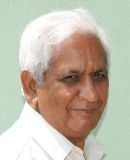How to Survive a Stroke.
Timing is key: The sooner treatment begins, the better.
Thinkstock
In less than 60 seconds, an ischemic stroke kills 1.9 million brain cells, making timely treatment essential.
Don't Miss This
Stroke symptoms usually appear suddenly and progress quickly, but they can fluctuate or evolve over hours or even days.
The vast majority of strokes are ischemic, occurring when blood flow to the brain is blocked.
Stroke treatment is most effective if started within the first few hours. Call Hospital Emergency as soon as you spot warning signs.
The second that stroke symptoms appear, it’s a race against the clock. Every passing minute could not only increase the amount of damage to the brain, but also reduce the odds of recovery. Strokes occur in the brain, but they can affect the entire body and cause trouble with thinking, movement, and speech.
Recognizing the warning signs of a stroke is key to preventing long-term disability, says David Zhao, MD, section chief and professor of cardiology at Wake Forest Baptist Medical Center in Winston-Salem, North Carolina. “The brain is composed of cells called neurons,” he explains. “Neurons are oxygen-hungry cells. They require a lot of oxygen to live and function. When you cut off the oxygen supply to these cells, it only takes a short period of time for them to die.” Neurons cannot regenerate. When they die, they are replaced by scar tissue that doesn’t function as a normal brain cell.
It’s also important to note exactly what time symptoms started, or the last time the person was known to be well, adds Victor C. Urrutia, MD, associate professor of neurology and director of the Comprehensive Stroke Center at The Johns Hopkins Hospital. This determines the treatments stroke patients can receive and reduces the likelihood that they will suffer long-term disability, he explains.
Stroke Basics
There are two types of stroke. About 87 percent of strokes are ischemic strokes, according to the U.S. Centers for Disease Control and Prevention (CDC). An ischemic stroke occurs when blood flow to the brain is blocked, Dr. Zhao explains. In many cases, blood clots cause the blockages that lead to this type of stroke.
In less than 60 seconds, an ischemic stroke kills 1.9 million brain cells, making timely treatment essential, the Stroke Awareness Foundation warns.
The less common hemorrhagic stroke occurs when a blood vessel in the brain bursts, causing blood to pool. As pressure builds up in the brain, cells are damaged, according to the National Heart, Lung, and Blood Institute (NHLBI).
Warning Signs of Stroke
Stroke symptoms may include:
• A severe headache
• Blurred or double vision
• Slurred speech or trouble speaking
• Facial twitching or weakness
• Drooling
• Confusion
• Sudden weakness in an arm or leg, typically on just one side of the body
• Dizziness or loss of balance
People may experience one or a combination of these symptoms, depending on the severity of the stroke and the part of the brain affected, Zhao notes. Symptoms among women may also be less obvious, he cautions.
“Stroke symptoms are sudden; however, the symptoms can fluctuate or evolve over several hours,” Dr. Urrutia adds. “In other words, the stroke symptoms can improve, get worse, or change after it started.”
Remembering the acronym FAST can help you spot signs and symptoms of stroke: F for face drooping, A for arm weakness, S for speech difficulty, and T for time to get help.
If you notice any signs of a potential stroke, call Hospital Emergency right away, even if symptoms seem to disappear. Remember to record the time that symptoms started, as this can help doctors guide treatment.
Surviving a Stroke: Timing Treatment
For those having an ischemic stroke, there is a critical three-hour window during which a clot-busting medication known as tPA (tissue plasminogen activator) can be beneficial. It breaks up blood clots in the arteries of the brain, so the sooner this medication is given, the better.
After the time window, ischemic stroke patients are no longer candidates for tPA, Zhao says. The drug is not only less effective, but could also be dangerous. "After a certain period of time, tissues in the brain become injured or weakened," he explains. Giving the clot-buster at that point could cause damaged brain tissue to bleed.
After an ischemic stroke, patients must have a complete evaluation to determine where the clot originated to prevent a recurrence, Zhao says. They may also receive anti-platelet medication to help stop blood clots from forming. Anticoagulants, commonly called blood thinners, may also be used to prevent new clots, he adds.
Another procedure that doctors may perform to remove any blockage and restore blood flow to the brain is endovascular recanalization therapy. This treatment, in which a tube is inserted into the arteries to re-open blocked vessels, has a time window of effectiveness of about four-and-a-half hours after a stroke — slightly longer than that of tPA. Like clot-busting medication, endovascular recanalization has been shown to reduce disability and improve the chances of being independent after 90 days, Urrutia says.
Some patients may undergo an angioplasty (in which a tiny balloon is placed inside the affected artery to widen it) or a carotid endarterectomy (a procedure to remove plaque buildup from the artery).
For those who have a hemorrhagic stroke, treatment starts with finding and stopping the source of the bleeding. Depending on its cause, next steps could involve blood pressure medication and possibly surgery.
Long-Term Outlook
Continuing treatment is two-pronged: rehabilitation to recover any functioning affected by the stroke, and steps to prevent another stroke.
The specifics of rehab depend on what the individual needs. For instance, speech and language therapists can help stroke victims find ways to communicate and improve their memory. Physical and occupational therapists can help those with paralysis or muscle weakness regain strength and relearn how to perform daily tasks, such as getting dressed, eating, and bathing.
Anyone who has had a stroke is at risk of having another one. “That is why it is very important to be on the best prevention regimen and to develop a healthy lifestyle after a stroke,” Urrutia says.
Zhao says that long-term treatment must focus on lifestyle changes to reduce the risk for future strokes, including controlling blood pressure, not smoking, exercising regularly, and eating a healthy diet. more












